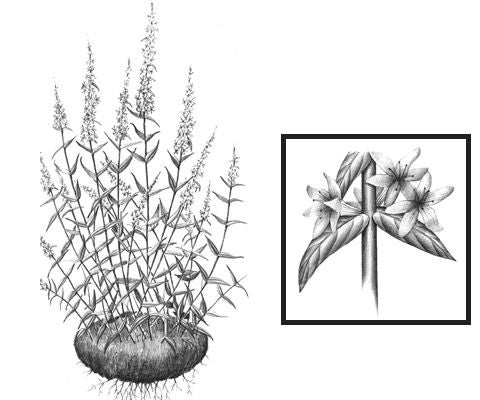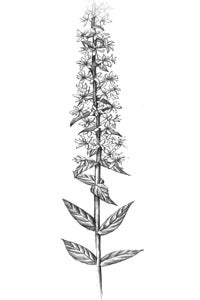
Background
Purple loosestrife is a strikingly beautiful wildflower that was brought to North America in the early 1800s. It put down roots - literally - in the east, and spread rapidly westward. Today, it can be found across much of Canada and the United States. This exotic invader crowds out native plants and destroys food and habitat for wildlife. It blooms from mid-July to the end of August in all kinds of wetlands.
Procedure
Take the following steps to help curb the spread of this alien intruder in your backyard and your community:

• Never transplant purple loosestrife to home or cottage gardens.
• To help control smaller patches, you can hand-pull younger plants.
• Dig out older plants, especially those in bogs and deep organic soils.
• Avoid breaking off roots, as they can extend 30 cm or deeper into the soil, and will re-sprout.
• Never mow purple loosestrife. Cut plant matter may re-root.
• All pulled parts must be removed, dried, and, if possible, burned. Plants can re-root from the tiniest piece of root, stalk, leaf, flower, seed head, or even bits dropped from a wheelbarrow.
• Place all plant matter in a carton or at a protected site so it can dry completely without being spread by wind, water, humans, or animals. When burning purple loosestrife, make sure all plant matter is destroyed. When packaging, wrap the plants securely in a plastic bag or container to avoid contamination at landfill sites. Before composting, make sure all matter is fully dried so that living remnants aren't spread to other gardens or landscaping sites.
• All work should be completed by mid-summer, before the flowers go to seed. Seed formation starts at the bottom of the flower and progresses to the tip. Before taking action, check to see that there are no ripe seeds. If any are present, and there is a chance that they may be spread, put the project on hold until the next year.
• Make sure you have the right plant! Don't be confused by purple loosestrife look-alikes, such as fireweed and blue vervain.
• Where plant digging isn't possible, removing flower heads will help slow the spread of seeds. Simply cut the head in mid-summer before the flower goes to seed. Remove and destroy the flowering head as outlined above.
• Inform others in your community about the purple loosestrife predicament and what they can do about it.
• To report purple loosestrife infestations, contact the Canadian Wildlife Federation at 1-800-565-6305. You'll receive a "Purple Loosestrife Report Form" to help researchers document the location and size of all wetland infestations and ultimately get them under control.
Maintenance
Monitor the site for several years. New shoots may come up from root remnants. Any new growth should be dealt with quickly.
